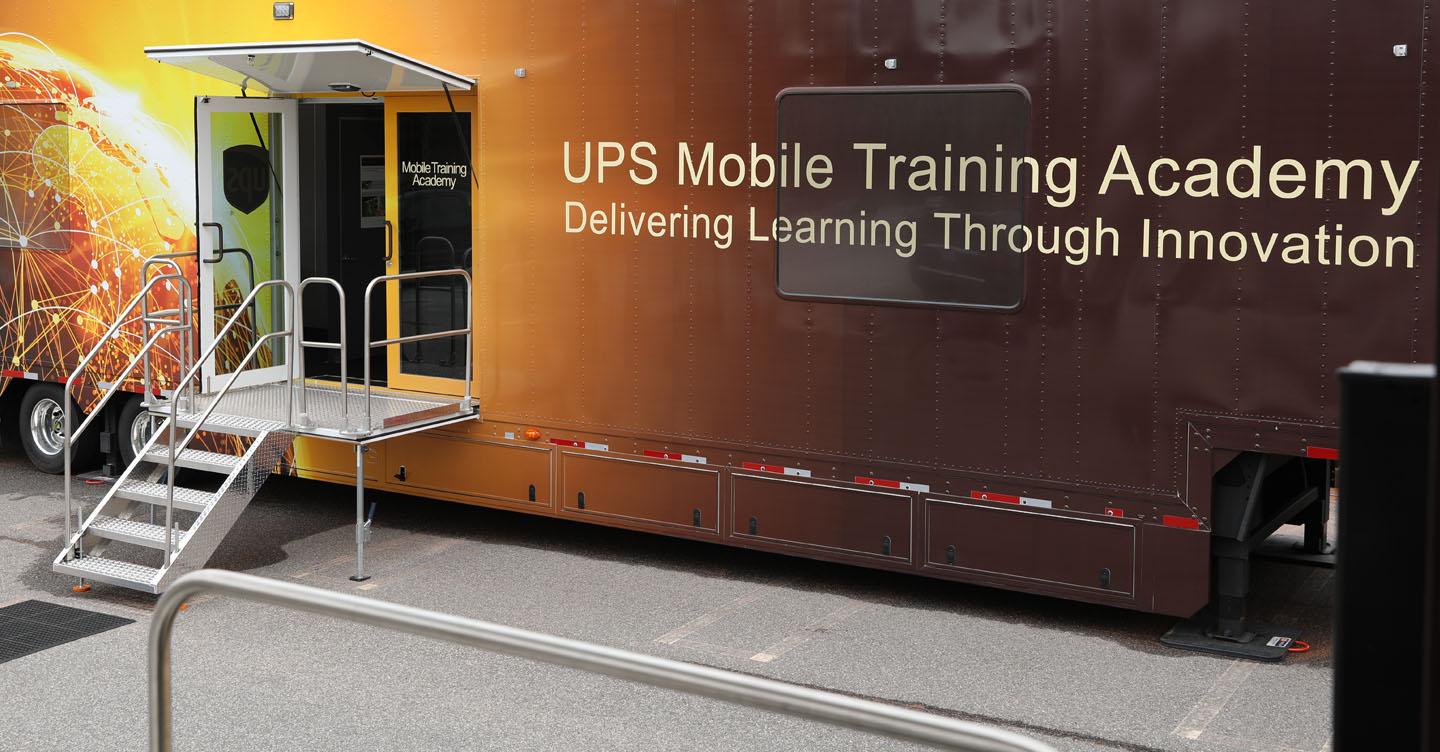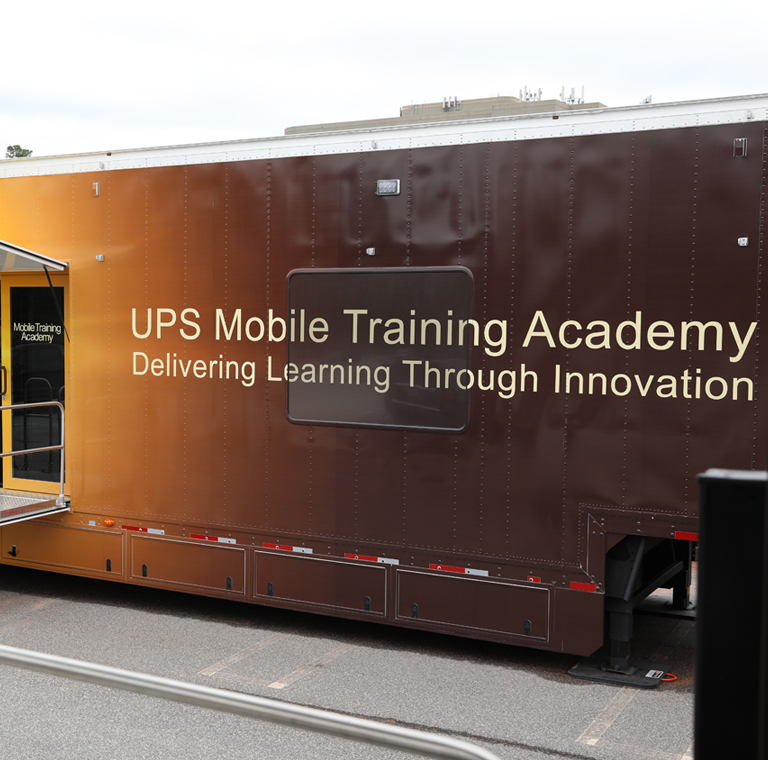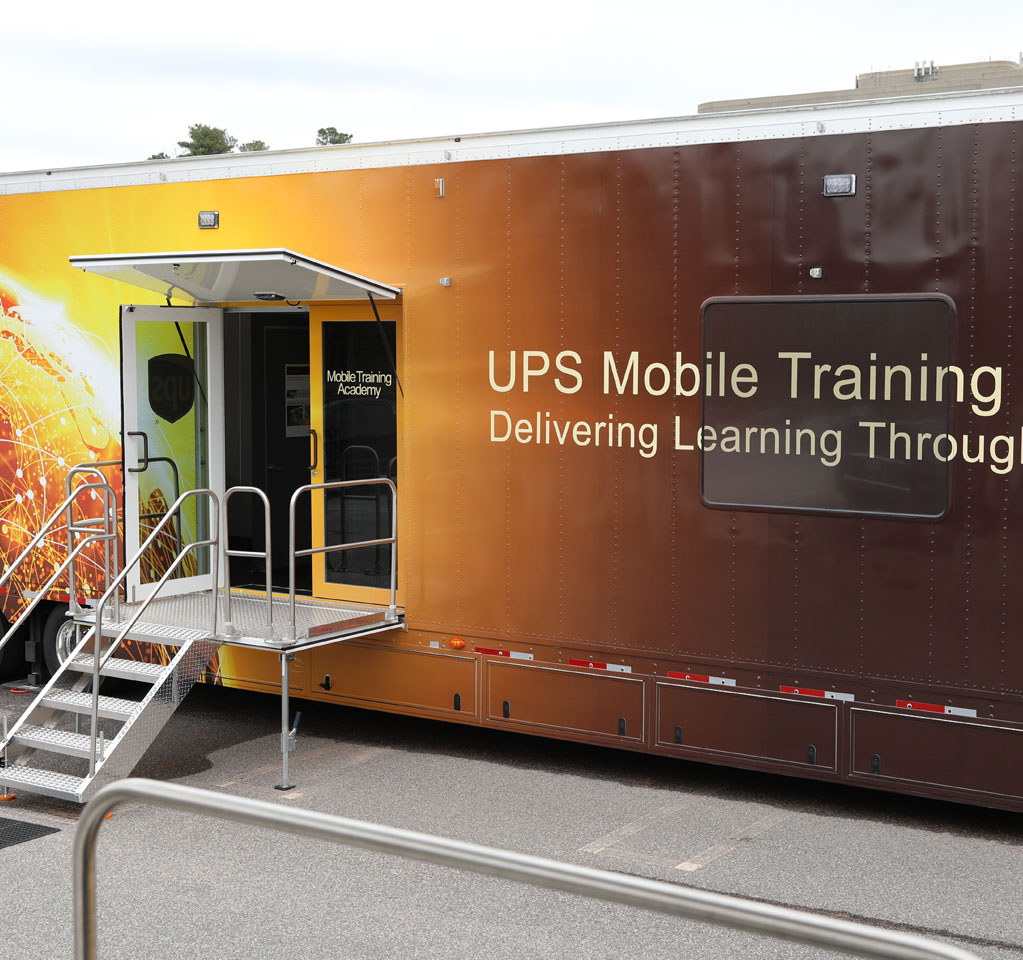The UPS Integrad Mobile Training Academy is the newest innovation to revolutionize the way driver training is done.
As part of the company’s investment in its people and redoubled efforts to promote safety, the Integrad training expansion team worked with Juan Perez, chief information and engineering officer, to condense the training concepts taught in UPS brick-and-mortar driver training facilities into two 53-foot-long mobile trailers. “Juan asked us to reimagine how we could take the training and deliver the experience virtually,” said Tristan Christensen, UPS Integrad expansion director. “These trailers bring the classroom to the students.”
Currently, UPS has 12 (10 in the U.S. and two in Europe) permanent UPS Integrad training facilities. The brick-and-mortar facilities average 30,000 square feet while the two mobile units are 6,400 square feet. The Mobile Training Academy, which can be rapidly deployed to any location, combines the classroom and the learning lab by putting each into the movable trailers. The classroom unit offers the same seating accommodations – 24 students and four facilitators – as the traditional facilities, though currently, due to COVID, the class size is reduced to 15 students. Facilitators take advantage of smartboards and upload information to students via tablets.
The versatile trailer can also be quickly transformed from a traditional learning space into a training track for slips and falls.
The use of virtual reality and augmented reality kiosks allow drivers to experience real-life scenarios. Students practice their driving skills and demonstrate their ability to properly identify and handle hazards on the road in a simulated experience.
“The driver simulation captures everything you want drivers to experience before they get out on the road,” said Deb Pockette, UPS Integrad project manager. “Any time we can train our drivers, particularly our new drivers, in realistic conditions makes for safer drivers.”
The learning lab/driver experience unit simulates the inside of a package car. The mobile trailer is a package car split in half with each side serving a specific purpose. This allows drivers to learn everyday skills like lifting real packages, sorting inside the vehicle, maneuvering their hand cart, safely getting on and off the vehicle and navigating their walk path.
Driver candidates have given the mobile academy positive reviews.
“It’s flexible and nimble,” said Christopher Algiene, a seasonal driver candidate in California. “This unit allows you to do more things, faster.”
Robert Kelly, a returning driver candidate, said the virtual reality is a game changer for drivers no matter their experience. “UPS has evolved and the training has evolved,” he said. “With virtual reality, it allows you to view things like a bird on a driver’s shoulder or as the one doing the work, seeing how each task is completed. It’s a great learning tool.”
The standard UPS Integrad facilities will continue to serve as vital parts of the UPS training and development network, but the Mobile Training Academy allows the company to quickly take the training anywhere. This eliminates the need for trainee travel.
“This is just the beginning,” said Pat Robinson, UPS Integrad project lead. “We see the possibilities, and we know there’s a lot more we can do to enhance the experience for drivers.”
Tristan said beyond the driver training, the Mobile Training Academy can be used to further UPS’s brand by its ability to be used at career fairs, conferences and as a tour facility for companies looking to follow UPS’s lead.
Quick Facts:
- The UPS Mobile Training Academy is a combination of two self-sufficient trailers.
- The footprint for the brick-and-mortar facilities is approximately three acres compared to 1.5 acres for the mobile facility.
- The Mobile Training Academy includes all aspects of the brick-and-mortar set-up including “tiny town” and outside learning center.
- The Mobile Training Academy is one-fourth the cost of the brick-and-mortar facilities with the added benefit of eliminating trainee travel costs too.
“Any time we can train our drivers, particularly our new drivers, in realistic conditions makes for safer drivers.”


